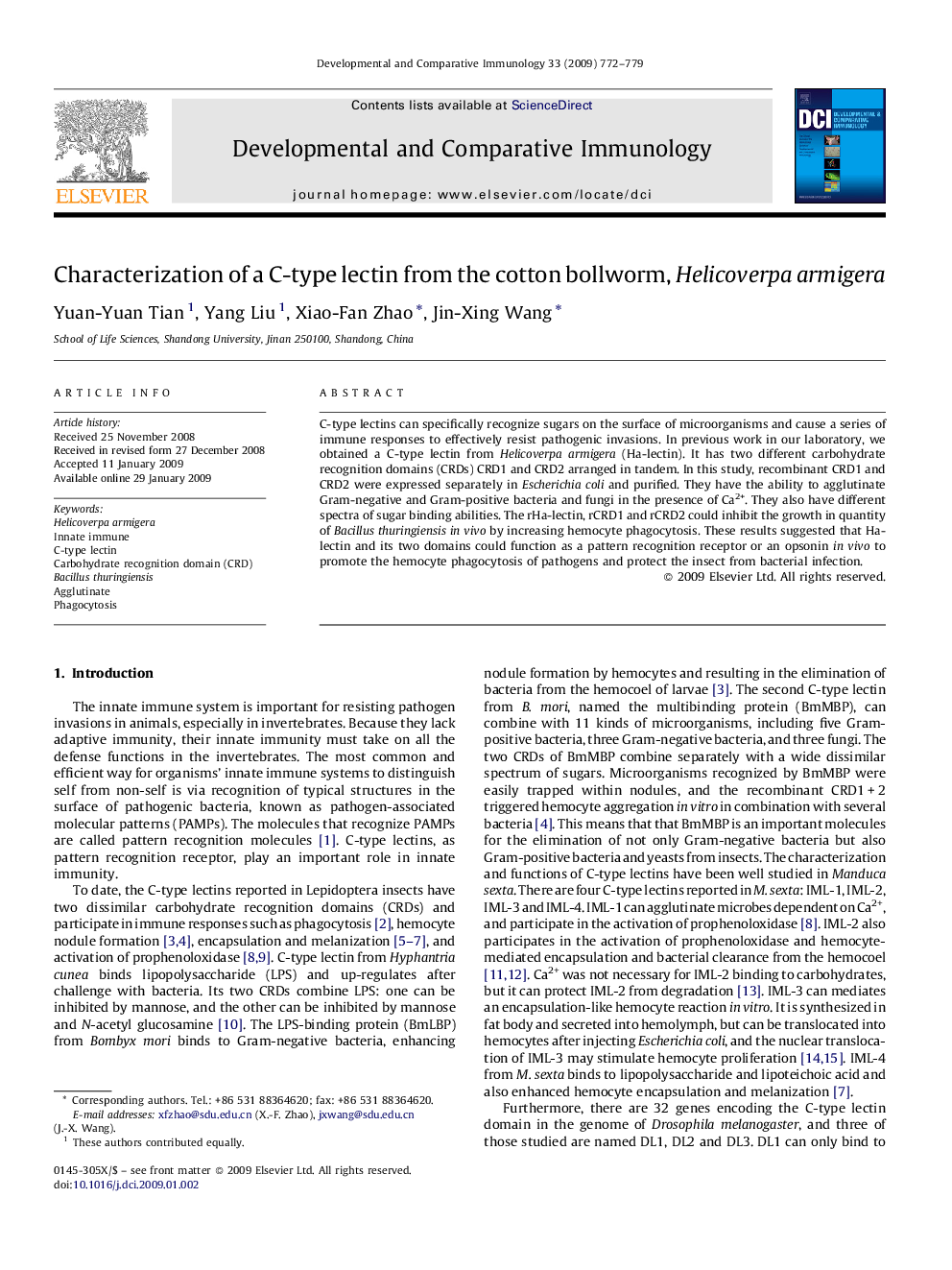| Article ID | Journal | Published Year | Pages | File Type |
|---|---|---|---|---|
| 2430051 | Developmental & Comparative Immunology | 2009 | 8 Pages |
C-type lectins can specifically recognize sugars on the surface of microorganisms and cause a series of immune responses to effectively resist pathogenic invasions. In previous work in our laboratory, we obtained a C-type lectin from Helicoverpa armigera (Ha-lectin). It has two different carbohydrate recognition domains (CRDs) CRD1 and CRD2 arranged in tandem. In this study, recombinant CRD1 and CRD2 were expressed separately in Escherichia coli and purified. They have the ability to agglutinate Gram-negative and Gram-positive bacteria and fungi in the presence of Ca2+. They also have different spectra of sugar binding abilities. The rHa-lectin, rCRD1 and rCRD2 could inhibit the growth in quantity of Bacillus thuringiensis in vivo by increasing hemocyte phagocytosis. These results suggested that Ha-lectin and its two domains could function as a pattern recognition receptor or an opsonin in vivo to promote the hemocyte phagocytosis of pathogens and protect the insect from bacterial infection.
